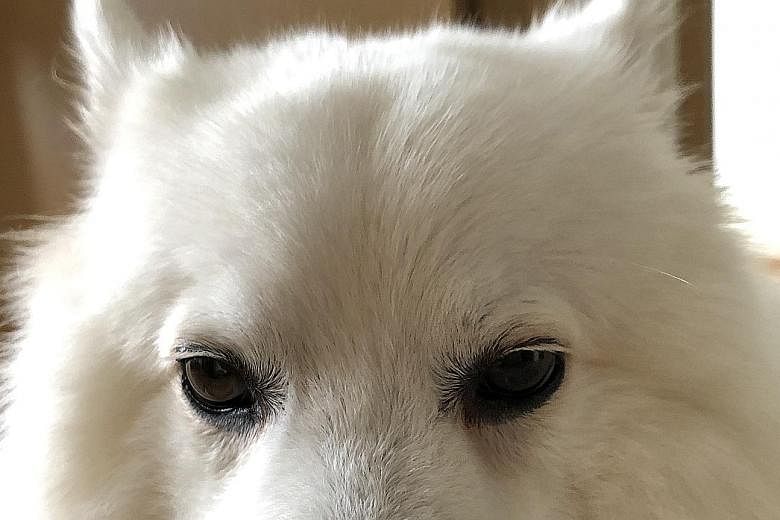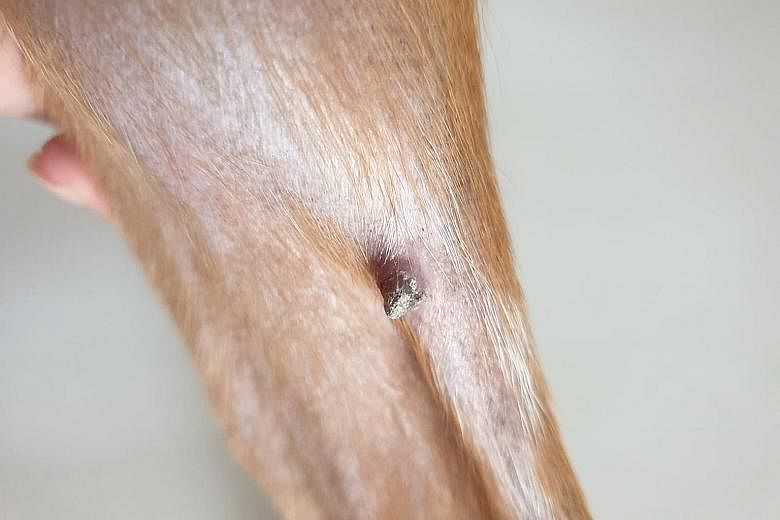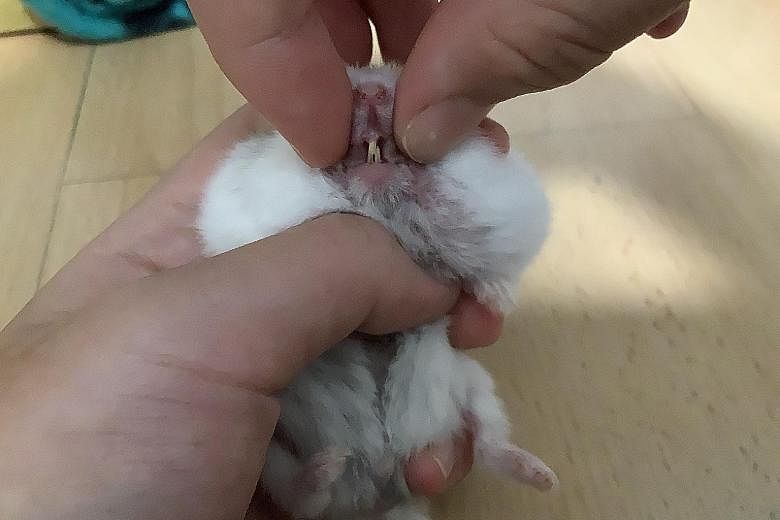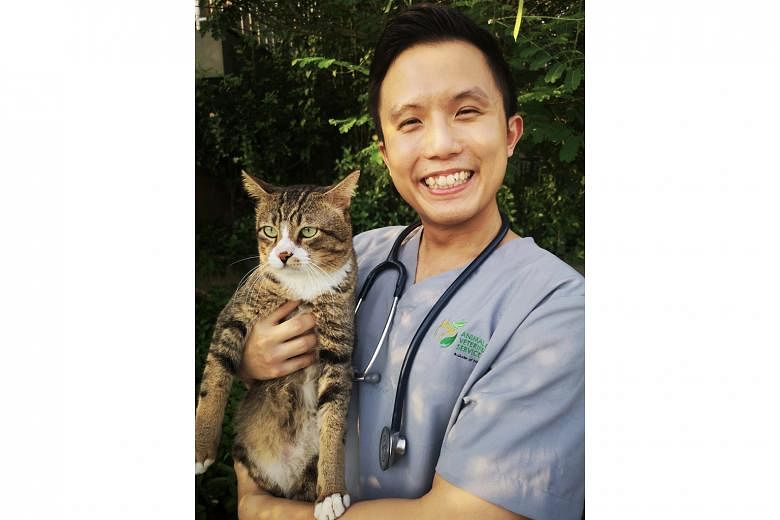Tear stains under Japanese spitz's eyes
My four-year-old Japanese spitz has a persistent problem with tear stains under the eyes.
This condition was also prevalent with my previous spitz dog. Is this a condition common to this breed?
What causes excessive tear stains and what is the best way to clean them? Is there any way to prevent this from getting worse?
Lawrence Ong
Tear staining is a common concern of pet owners. The fur under the eye is stained due to pigments that can be found in tears called porphyrins, or due to a skin infection of that area.
It is more noticeable in dogs with light-coloured fur, such as your Japanese spitz.
Two common causes of tearing in dogs are either irritation to the eye or problems with tear drainage.
When irritated, the eye naturally produces more tears. Irritation can arise from conditions such as infection, certain eye diseases, trauma, reaction to irritants such as allergens or dust, or eyelash or eyelid abnormalities.
In some cases, eyelashes may be growing inside the eyelids and may need to be examined and removed by a vet.
If your dog is experiencing pain or discomfort in the eye, which can be seen by redness, pawing of the eye, squinting or excessive blinking, take it to the vet.
Problems with tear drainage can occur when the natural openings in the eyes that drain tears into the nose and throat are blocked. That is why humans get a runny nose when they cry.
A vet has to conduct a detailed examination to assess the possible cause of the blockage.
Certain breeds may also have distinct face shapes with shallow eye sockets and these may also result in tears overflowing easily.
-
Fun fact
-
A 2012 study by Emory University found that birds' brains respond to birdsong in a similar way that human brains respond to music they like.
In addition to music, you can play sounds of nature for your pet birds, but ensure there are no predator calls in the audio.
Try playing songs when the bird is in a good mood, for instance when it is singing, talking or whistling. Repeat the process several times and it may eventually associate those songs with that particular mood.
It is important to first discuss the cause of the tear staining with your vet before deciding on the appropriate solutions or treatment. Some of these may involve surgical procedures for your dog.
Although there are many off-the-shelf commercial products for removing tear stains, it is always advisable to consult your vet before using them.
Growth on Singapore Special's hind leg
I noticed a growth on my Singapore Special's right hind leg three to four weeks ago. What is this and is it serious?
Karin Ng
There are many causes of lumps and bumps in dogs and some growths may disappear on their own over time.
From the picture, while the growth may look like a wart or sebaceous growth, one can never be sure unless one does a proper examination. One is also unable to tell with the naked eye if it is cancerous.
A vet will usually check by visually assessing the growth and its surrounding area and also touching it. Its look and feel may provide more informationabout the characteristics of the tissue in the growth.
Samples of the growth may also be collected using a fine needle and examined under a microscope to get an idea of the cell types in the growth.
If needed, a vet may also suggest a skin biopsy, in which sedation or anaesthesia may be needed.
This is so that a larger piece of the tissue can be removed - sometimes the entire growth may be removed during the process - and sent for detailed laboratory examination.
Depending on the findings, your vet will advise if any treatment is needed or further monitoring would suffice.
As a good practice, owners should examine their dog's skin regularly from head to tail to check for new growths.
You may want to take a photo of any growths for future reference.
Recording any changes to the size and shape of the growths over time will help in your vet's diagnosis.
Hamster's lost tooth
My pet hamster lost a tooth recently. Should I be worried?
Erica Tay
Like all rodent species, hamsters' incisors - the four front teeth - are continuously growing.
-
Write in
-
Have a query about your pet? E-mail it with clear, high-resolution pictures of at least 1MB, if any, and your full name to stlife@sph.com.sg. We reserve the right to edit and reject questions.
So, there should be some signs that the tooth is growing back if one was lost a while ago. If there are no signs the tooth is growing back, a visit to the vet for a dental examination is recommended.
The vet may check if the tooth is fractured below the gumline or if there is some permanent damage to the gum tissues.
There may be a need to conduct regular trimming of the remaining incisors over time to prevent overgrowth if the front tooth is permanently lost.
Hamsters with dental issues may show signs of reduced appetite and drooling. There could also be weight loss or a foul smell coming from its mouth.
If you observe any of these signs, you should take your hamster to a vet immediately.
• Answers by Dr Han Zi Yang, a senior veterinarian in the Animal & Veterinary Service and proud owner of two mixed-breed rabbits, Nolla and Tubby.




